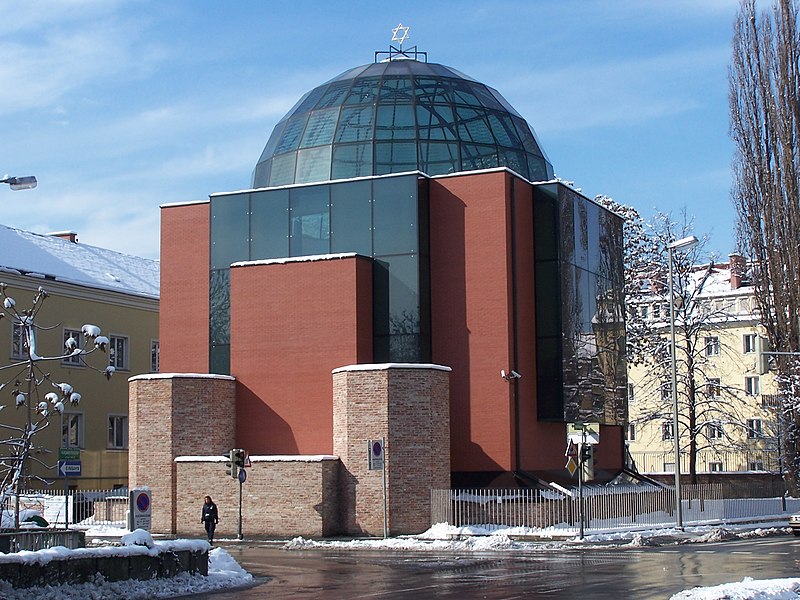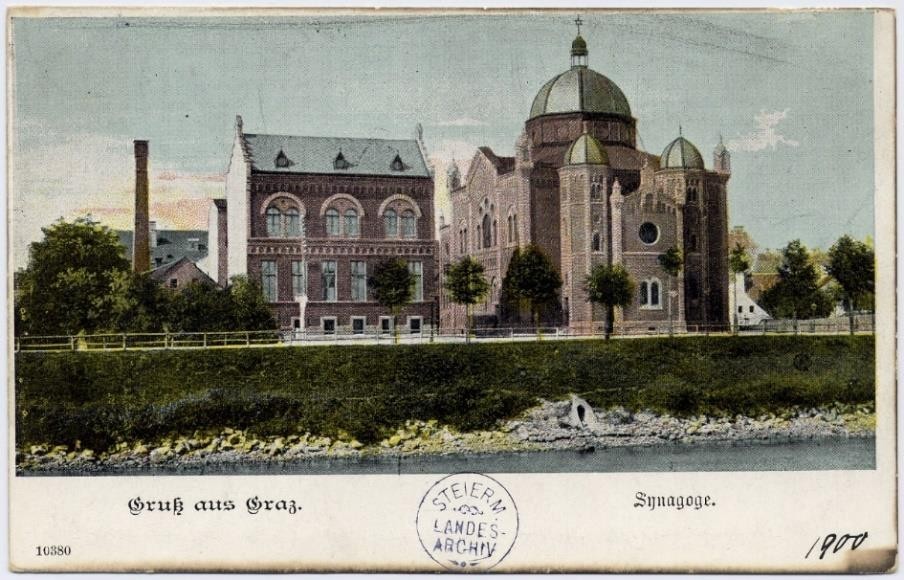The Jewish presence in Graz seems to date back to the Middle Ages, but the only certainties point to the 12th century, but the first mention is in 1261. A Jewish community was formed at the end of the 14th century, which had a synagogue, a mikveh and a cemetery. As in most other Austrian cities, the community was very small until the end of the 18th century.

In 1783, Jews were again officially allowed to participate in trade fairs. From 1848 onward, Jewish families gradually settled in Graz. A Jewish community was again formed and developed rapidly. It consisted of 566 people in 1869 and 1720 in 1934. During this period, a synagogue was inaugurated and a Jewish cemetery opened.
Following the Anschluss of 1938, a process of aryanization of Austrian towns was set in motion by the Nazis. On Kristallnacht in November, the synagogue was destroyed and 300 Jews were arrested and deported. A quarter of Graz’s 1,600 Jews managed to flee. The Holocaust claimed many victims in the country.

In the aftermath of the war, just over 100 Jews returned to Graz to rebuild the community. A unanimous decision was taken by the Austrian parties to rebuild a synagogue in Graz, which was opened in 2000. Many of the bricks used were symbolically taken from the ruins of the old synagogue. Its construction by the architect couple Jorg and Ingrid Mayr is very original. The synagogue has a magnificent glass dome. The square on which it is located has been renamed David Herzog Platz, in honour of the last rabbi who officiated there before the Second World War. In 2020, the synagogue was the victim of an antisemitic attack.
In 2025, the community has 150 members.
Sources : Encyclopaedia Judaica, Times of Israel